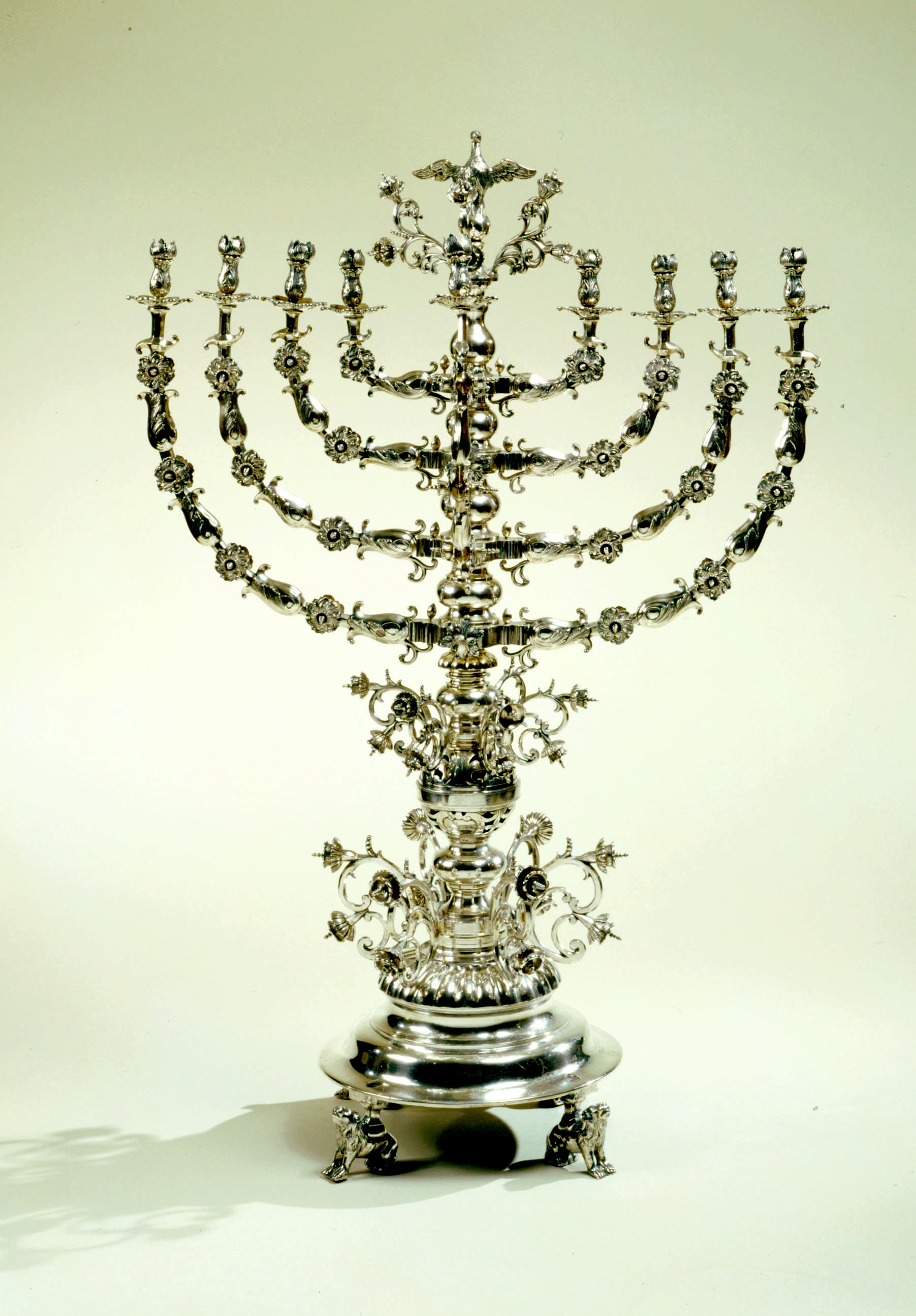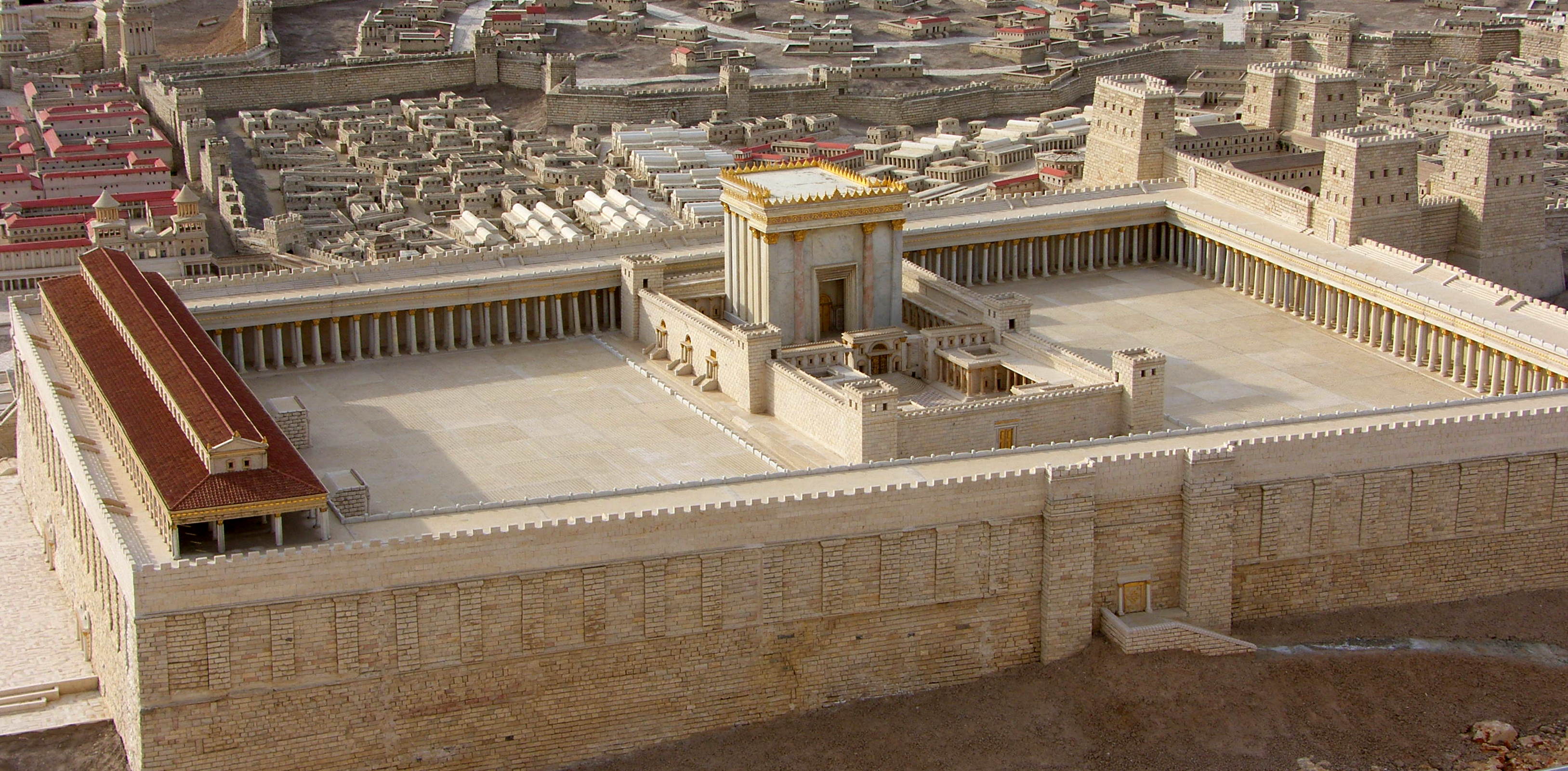|
Candelabra
A candelabrum (plural candelabra but also used as the singular form) is a candle holder with multiple arms. "Candelabra" can be used to describe a variety of candle holders including chandeliers. However, candelabra can also be distinguished as branched candle holders that are placed on a surface such as the floor, stand, or tabletop. The chandeliers, on the other hand, are hung from the ceiling. The Romans used the term to describe a form of ornamental lighting, which may be a tall stand that supports a lamp. In Judaism, the menorah and hanukkiah are special kinds of candelabra. Candelabra are also used in churches, in ceremonies such as Tenebrae, in certain Eastern Catholic and Eastern Orthodox Church liturgy such as the dikirion and trikirion. Candelabra in the form of branched candlesticks also became popular in homes as decorative lighting. In modern times, electricity has largely relegated candleholders to decorative use in homes. The interior designers nowadays conti ... [...More Info...] [...Related Items...] OR: [Wikipedia] [Google] [Baidu] |
Chandeliers
A chandelier () is an ornamental lighting device, typically with spreading branched supports for multiple lights, designed to be hung from the ceiling. Chandeliers are often ornate, and they were originally designed to hold candles, but now incandescent light bulbs are commonly used, as well as fluorescent lamps and LEDs. A wide variety of materials ranging from wood and earthenware to silver and gold can be used to make chandeliers. Brass is one of the most popular with Dutch or Flemish brass chandeliers being the best-known, but glass is the material most commonly associated with chandeliers. True glass chandeliers were first developed in Italy, England, France, and Bohemia in the 18th century. Classic glass and crystal chandeliers have arrays of hanging "crystal" prisms to illuminate a room with refracted light. Contemporary chandeliers may assume a more minimalist design, and they may illuminate a room with direct light from the lamps or are equipped with translucent g ... [...More Info...] [...Related Items...] OR: [Wikipedia] [Google] [Baidu] |
Vatican Museums
The Vatican Museums (; ) are the public museums of the Vatican City. They display works from the immense collection amassed by the Catholic Church and the papacy throughout the centuries, including several of the best-known Roman sculptures and most important masterpieces of Renaissance art in the world. The museums contain roughly 70,000 works, of which 20,000 are on display, and currently employs 640 people who work in 40 different administrative, scholarly, and restoration departments. Pope Julius II founded the museums in the early 16th century. The Sistine Chapel, with its ceiling and altar wall decorated by Michelangelo, and the Stanze di Raffaello (decorated by Raphael) are on the visitor route through the Vatican Museums, considered among the most canonical and distinctive works of Western and European art. In 2024, the Vatican Museums were visited by 6.8 million people. They ranked second in the list of most-visited art museums and museums in the world after the L ... [...More Info...] [...Related Items...] OR: [Wikipedia] [Google] [Baidu] |
Temple Menorah
The Temple menorah (; , Tiberian Hebrew ) is a seven-branched candelabrum that is described in the Hebrew Bible and later ancient sources as having been used in the Tabernacle and the Temple in Jerusalem. Since ancient times, it has served as a symbol representing the Jews and Judaism in both the Land of Israel and the Jewish diaspora. It became the State of Israel's official emblem when it was founded in 1948. According to the Hebrew Bible, the menorah was made out of Gold#Religion, pure gold, and the only source of fuel that was allowed to be used to light the lamps was olive oil#Judaism, fresh olive oil. The menorah was placed in the Tabernacle. Biblical tradition holds that Solomon's Temple was home to ten menorahs, which were later plundered by the Judah's revolts against Babylon, Babylonians; the Second Temple is also said to have been home to a menorah. Following the Siege of Jerusalem (70 CE), Roman destruction of Jerusalem and the Temple in 70 CE, the menorah was taken ... [...More Info...] [...Related Items...] OR: [Wikipedia] [Google] [Baidu] |
Hanukkah Menorah
A Hanukkah menorah, or hanukkiah, is a nine-branched candelabrum lit during the eight-day Jewish holiday of Hanukkah. Eight of the nine branches hold lights (candles or oil lamps) that symbolize the eight nights of the holiday; on each night, one more light is lit than the previous night, until on the final night all eight branches are ignited. The ninth branch holds a candle, called the ''shamash'' ("helper" or "servant"), which is used to light the other eight. The Hanukkah menorah commemorates, but is distinct from, the seven-branched menorah used in the ancient Temple in Jerusalem. Along with the seven-branched menorah and the Star of David, it is among the most widely produced articles of Jewish ceremonial art. Construction The shamash must be offset on a higher or lower plane than the main eight candles or oil lamps, but there are differing opinions as to whether all the lights must be arranged in a straight line, or if the hanukkiah can be arranged in a curve. Public ... [...More Info...] [...Related Items...] OR: [Wikipedia] [Google] [Baidu] |
Tenebrae
Tenebrae (—Latin for 'darkness') is a religious service of Western Christianity held during the three days preceding Easter Day, and characterized by a gradual extinguishing of candles, and the ''strepitus'' or "loud noise" in the total darkness at the end of the service. Tenebrae was originally a celebration of matins and lauds of the last three days of Holy Week (Maundy Thursday, Good Friday, and Holy Saturday) in the evening of the previous day (Holy Wednesday, Maundy Thursday and Good Friday) to the accompaniment of special ceremonies that included the display of lighted candles on a special triangular candelabra. Modern celebrations called Tenebrae may be of quite different content and structure, based for example on the Seven Last Words or readings of the Passion of Jesus. They may be held on only one day of Holy Week, especially Spy Wednesday (Holy Wednesday). They may be held during the daylight hours and the number of candles, if used, may vary. Tenebrae liturgi ... [...More Info...] [...Related Items...] OR: [Wikipedia] [Google] [Baidu] |
Candle
A candle is an ignitable candle wick, wick embedded in wax, or another flammable solid substance such as tallow, that provides light, and in some cases, a Aroma compound, fragrance. A candle can also provide heat or a method of keeping time. Candles have been used for over two millennia around the world, and were a significant form of indoor lighting until the invention of other types of light sources. Although electric light has largely made candle use nonessential for illumination, candles are still commonly used for functional, symbolic and aesthetic purposes and in specific cultural and religious settings. Early candles may be made of beeswax, but these candles were expensive and their use was limited to the elite and the churches. Tallow was a cheaper but a less aesthetically pleasing alternative. A variety of different materials have been developed in the modern era for making candles, including paraffin wax, which together with efficient production techniques, made can ... [...More Info...] [...Related Items...] OR: [Wikipedia] [Google] [Baidu] |
Arch Of Titus
The Arch of Titus (; ) is a 1st-century AD honorific arch, located on the Via Sacra, Rome, just to the south-east of the Roman Forum. It was constructed in 81 AD by Emperor Domitian shortly after the death of his older brother Titus to commemorate Titus's official deification or ''consecratio'' and the victory of Titus together with their father, Vespasian, over the Jewish rebellion in Judaea. The arch contains panels depicting the triumphal procession celebrated in 71 AD after the Roman victory culminating in the fall of Jerusalem, and provides one of the few contemporary depictions of artifacts from Herod's Temple. Although the panels are not explicitly stated as illustrating this event, they closely parallel the narrative of the Roman procession described a decade prior in Josephus' '' The Jewish War''. It became a symbol of the Jewish diaspora, and the menorah depicted on the arch served as the model for the menorah used as the emblem of the State of Israel. Th ... [...More Info...] [...Related Items...] OR: [Wikipedia] [Google] [Baidu] |
Siege Of Jerusalem (70 CE)
The siege of Jerusalem in 70 CE was the decisive event of the First Jewish–Roman War (66–73 CE), a major rebellion against Roman rule in the province of Judaea. Led by Titus, Roman forces besieged the Jewish capital, which had become the main stronghold of the revolt. After months of fighting, they breached its defenses, destroyed the Second Temple, razed most of the city, and killed, enslaved, or displaced a large portion of its population. The fall of Jerusalem marked the effective end of the Jewish revolt and had far-reaching political, religious, and cultural consequences. In the winter of 69/70 CE, following a pause caused by the Roman succession war, the campaign in Judaea resumed as Titus led at least 48,000 troops—including four legions and auxiliary forces—back into the province. By spring, this army had encircled Jerusalem, whose population had surged with refugees and Passover pilgrims. Inside the city, rival factions led by John of Gischala, Simon ... [...More Info...] [...Related Items...] OR: [Wikipedia] [Google] [Baidu] |
Emblem Of Israel
The emblem of Israel () depicts a temple menorah surrounded by an olive branch on each side, with the word ''Israel'' written in Hebrew language, Hebrew () below it. While it is commonly displayed in Tekhelet in Judaism, blue and white, the emblem has appeared in alternative colour combinations depending on the use, such as on the President of Israel, Israeli Presidential Standard (see below). History The State of Israel adopted the symbol after a design competition held in 1948. The design is based on the winning entry submitted by Gabriel and Maxim Shamir's proposal, with elements taken from other submissions, including entries from Oteh Walisch, W. Struski, Itamar David, Yerachmiel Schechter, and Willie Wind, whose entry won the first design competition. The emblem was officially adopted on February 10, 1949. [...More Info...] [...Related Items...] OR: [Wikipedia] [Google] [Baidu] |







